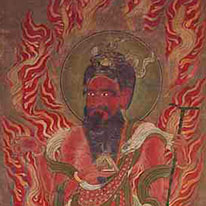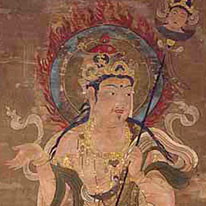Past Exhibitions
- Folding Screens of the Twelve Devas
- December 18, 2018 - January 27, 2019
Folding screens of the Twelve Devas have a very particular purpose in Japanese Esoteric Buddhism: They are used for the kanjō (in Sanskrit, Abhisheka) initiation ritual, which is modeled on ancient Indian coronation ceremonies. The kanjō ritual took hold in Japan as an inauguration rite for Esoteric Buddhist priests, which involved pouring water over the head.
The Twelve Devas are heavenly deities, originally based on Indian gods, who protect sacred training spaces in all directions. Their incorporation into the kanjō ritual probably started in Japan, where we find folding screens of this type being made from the 1100s onward.
Early Japanese paintings of the Twelve Devas always show the deities in seated positions. Why are the figures standing in these screens? This was probably a modification made to fit the figures into the vertical format of the screen panels (conveniently, there are exactly twelve panels in a pair of screens). In this sense Twelve Deva screens are an original category of Japanese Buddhist painting. At the same time, they employed the latest stylistic developments from China, which must have made them quite novel in their day.













